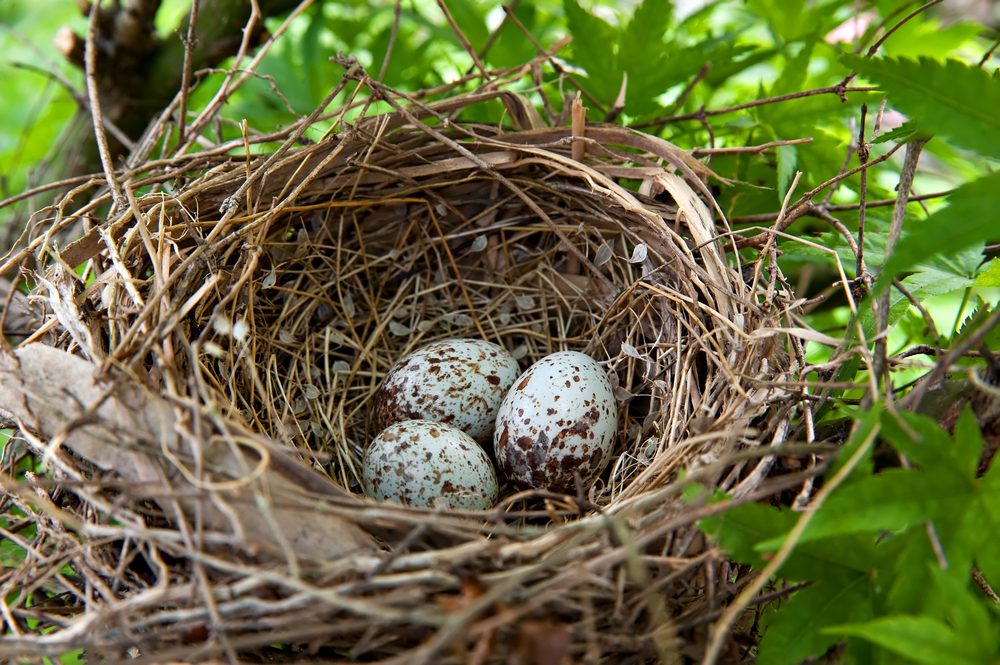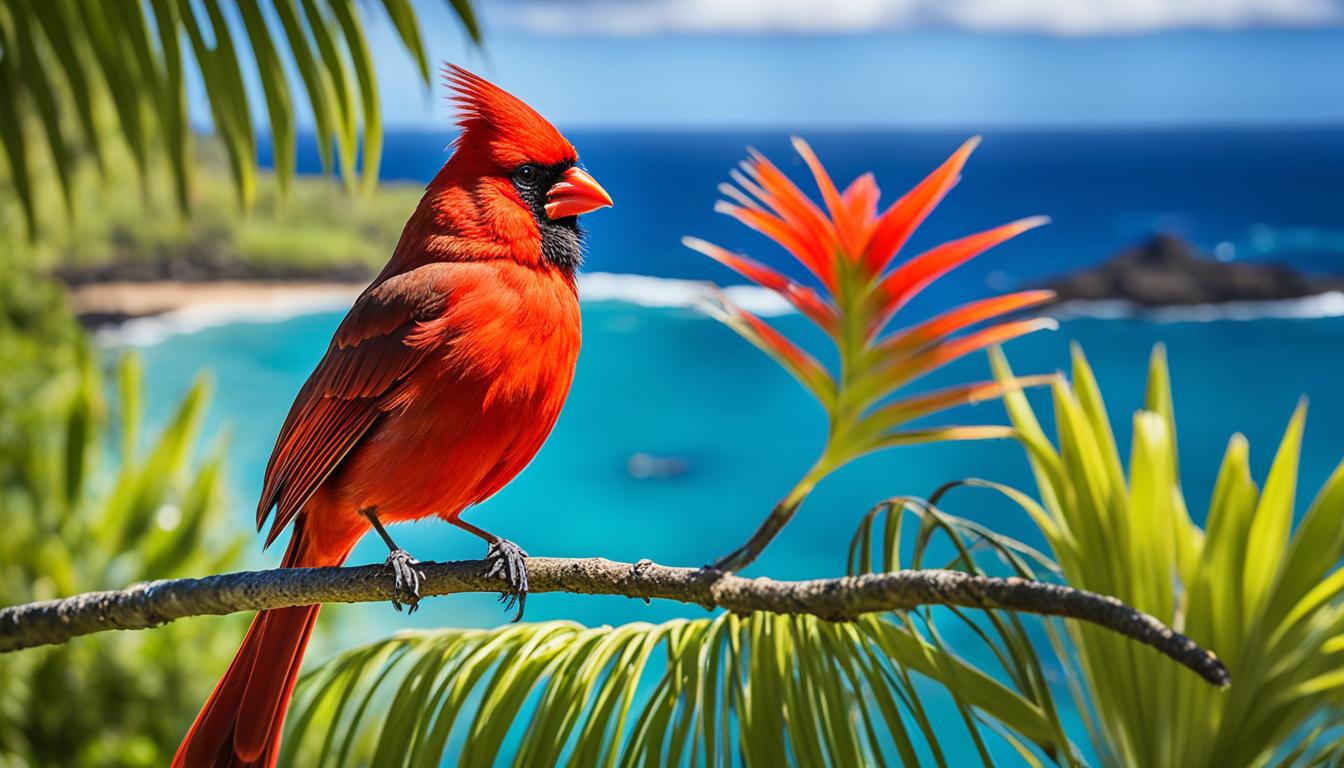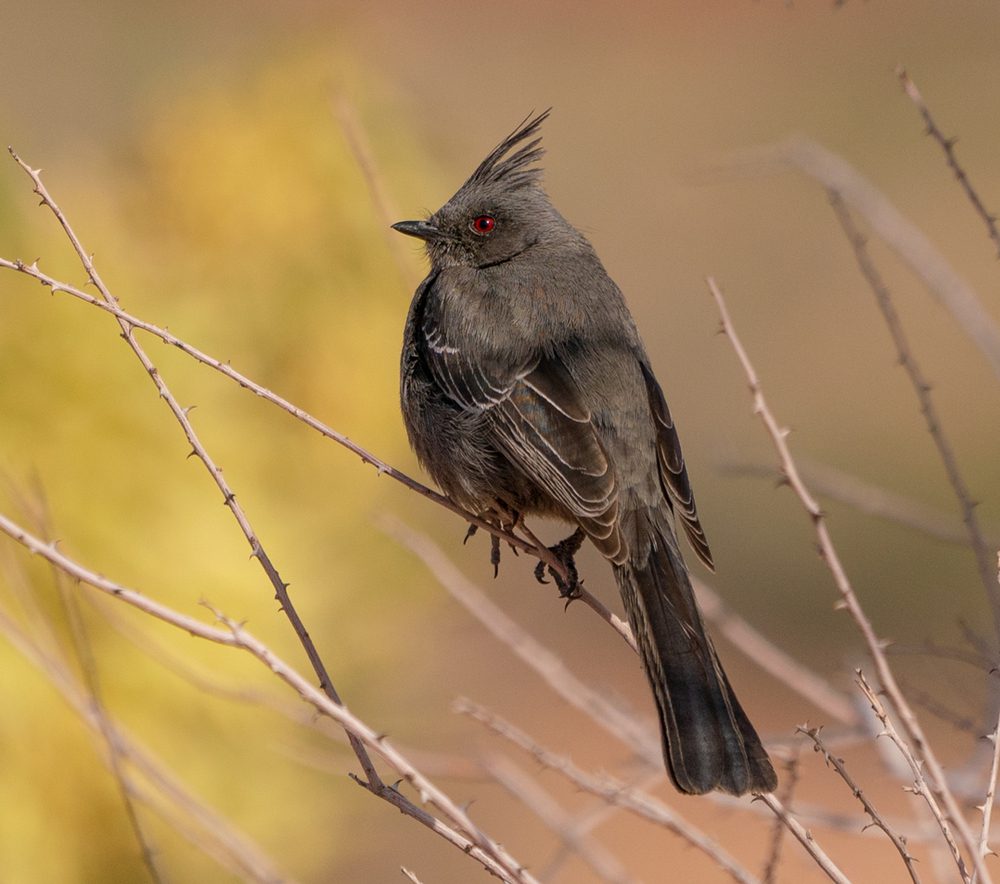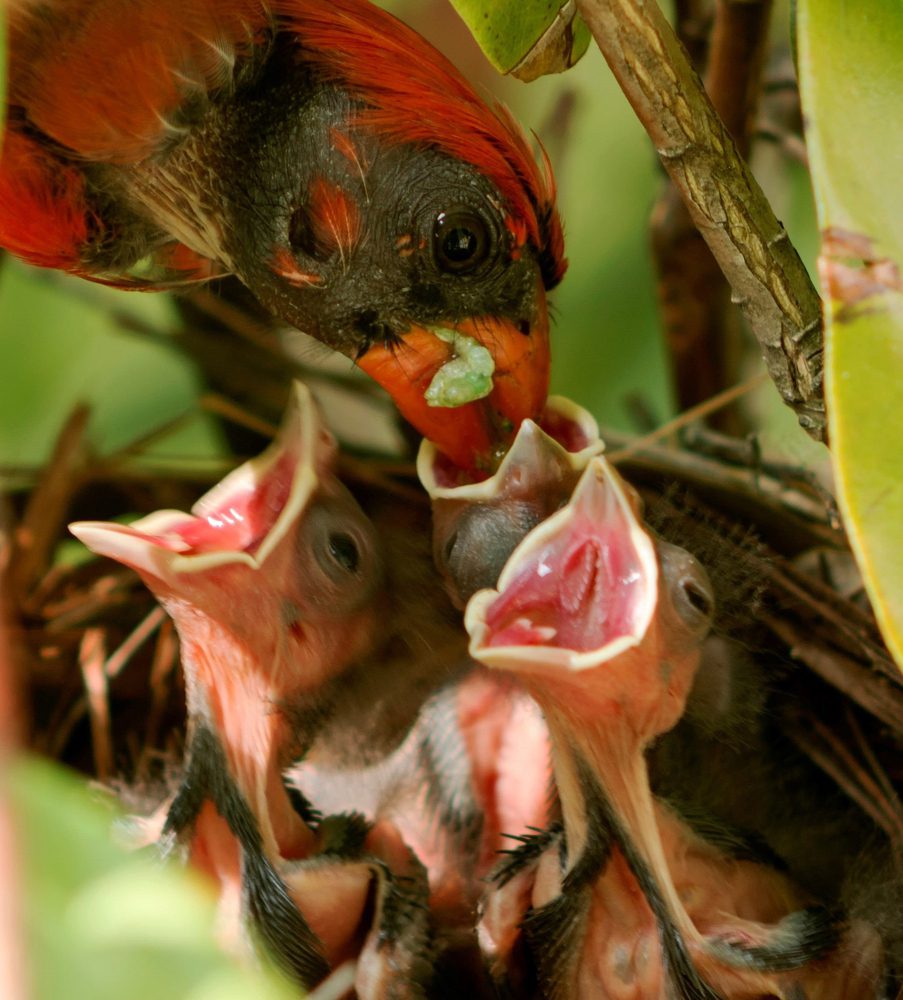Welcome to my blog post on how to stop red-winged blackbird attacks. If you’re tired of dealing with the aggression of these birds, you’ve come to the right place. In this article, I will provide you with effective strategies to keep red-winged blackbirds at bay and restore peace and serenity to your surroundings.
Red-winged blackbird attacks can pose a significant challenge for anyone living or working in areas where these birds are prevalent. Not only can they cause damage to property, but they can also be a safety concern, particularly when they target people, pets, or livestock. Ignoring these attacks can lead to negative consequences such as property damage, increased stress levels, and a compromised sense of security.
Key Takeaways:
- Red-winged blackbird attacks can be a nuisance and even pose safety concerns.
- Ignoring these attacks can lead to property damage and elevated stress levels.
- By implementing effective strategies, you can prevent red-winged blackbird attacks.
- Creating a bird-friendly landscape and using physical deterrents and sound-based repellents are key techniques.
- Regaining peace and tranquility is possible with the right approach.
Understanding Red-Winged Blackbird Behavior
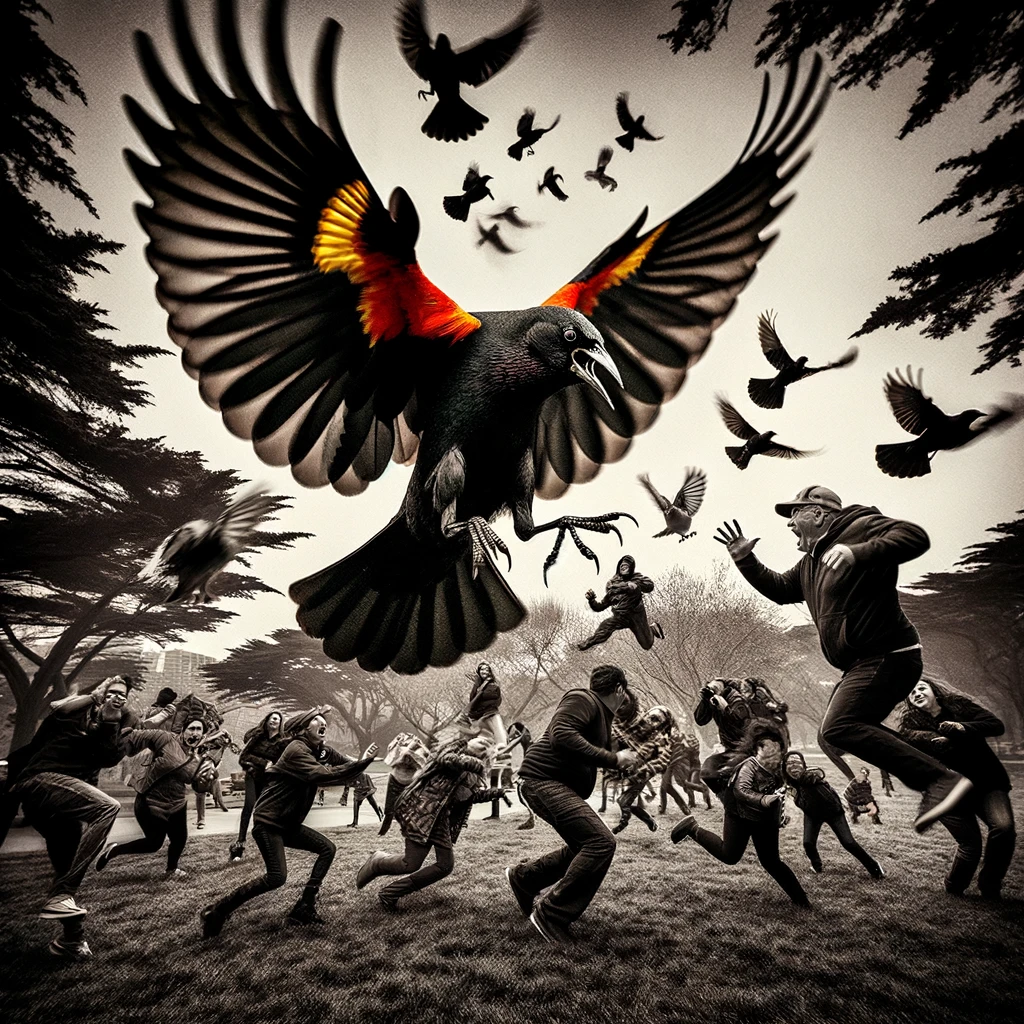
Before we delve into the solutions for stopping red-winged blackbird attacks, it’s crucial to understand the underlying behavior of these birds. By comprehending their territorial nature and recognizing how their actions contribute to their aggression, we can develop effective strategies to mitigate these encounters.
Red-winged blackbirds are known for their aggressive behavior, particularly during the breeding season, which typically occurs from late April to early August. During this time, the male blackbirds establish and defend their territories to attract mates and ensure successful breeding.
“Territorial behavior is a primary cause of red-winged blackbird attacks. These birds fiercely guard their territories, exhibiting aggressive postures and vocalizations to ward off intruders.”
Male red-winged blackbirds have distinct markings, with vibrant red shoulder patches that they display while defending their territories. They perch on elevated positions within their territory, such as tree branches or marsh reeds, and actively patrol the area to deter any potential threats.
When a perceived intruder, be it a human or another bird, enters their territory, red-winged blackbirds become highly agitated and engage in aggressive behaviors to protect their space. They vocalize loudly, squawk, and swoop down towards the intruder, often aiming for their head.
It’s important to note that not all red-winged blackbirds display the same level of aggression. Factors such as previous encounters with humans or their exposure to high human activity areas can influence their behavior. Some blackbirds may be more tolerant or skittish than others.
Understanding this behavior is key to effectively addressing red-winged blackbird attacks. By implementing strategies that focus on creating a peaceful coexistence, we can alleviate the conflicts between humans and these territorial birds.
Common Red-Winged Blackbird Behaviors:
- Perching on elevated positions to establish dominance and keep an eye on their territories.
- Vocalizing loudly and exhibiting aggressive postures when a potential intruder enters their territory.
- Swooping down towards intruders, often aiming for the head, to intimidate and discourage them.
- Defending their territories during the breeding season to attract mates and ensure successful breeding.
| Behavior | Description |
|---|---|
| Perching | Male red-winged blackbirds perch on elevated positions within their territories to establish dominance and keep a watchful eye on their surroundings. |
| Vocalizing | When a potential intruder enters their territory, red-winged blackbirds vocalize loudly, using distinct calls and squawks to assert their presence and intimidate the intruder. |
| Swooping | Red-winged blackbirds swoop down towards intruders, often aiming for their heads, in an attempt to frighten and deter them from entering their territory. |
| Territorial Defense | During the breeding season, male red-winged blackbirds fiercely defend their territories to attract mates and ensure successful breeding. |
Creating a Bird-Friendly Landscape

One effective approach to prevent red-winged blackbird attacks is to transform your landscape into a bird-friendly haven. By creating an environment that attracts other birds, you can divert the attention of red-winged blackbirds away from your property, reducing their aggression. Here are some essential strategies to consider:
1. Provide Food Sources
Planting native trees, shrubs, and flowers that produce berries, seeds, or nectar can attract a variety of birds and divert the focus of red-winged blackbirds. Consider including species such as serviceberry, sunflower, or coneflower in your landscape. Installing bird feeders can also provide supplementary food sources.
2. Offer Shelter and Nesting Sites
Creating a diverse range of habitats with different vegetation heights can attract various bird species. Incorporate trees, shrubs, and grasses to offer shelter and nesting opportunities. Birdhouses and nesting boxes can be strategically placed to provide additional nesting sites for desirable bird species. [1]
3. Install Bird Baths and Water Features
Adding bird baths, ponds, or fountains to your landscape can provide birds with essential water sources. Red-winged blackbirds are less likely to focus on attacking your property if they have access to clean water for drinking and bathing.
4. Minimize Open Areas
Red-winged blackbirds prefer open spaces, so reducing large open areas in your landscape can discourage their presence. Planting dense shrubs or incorporating structures like trellises or pergolas can create visual barriers that make your property less enticing to these birds.
5. Avoid Dense Grass and Low Vegetation
Red-winged blackbirds use low vegetation for nesting and hiding. To deter them, maintain taller grasses and avoid creating large areas of low-growing vegetation. Regularly mow and maintain your lawn to keep it shorter, minimizing suitable nesting spots for these birds.
By implementing these strategies, you can transform your landscape into a bird-friendly environment that reduces the likelihood of red-winged blackbird attacks on your property.
| Benefits of a Bird-Friendly Landscape: |
|---|
| 1. Deters red-winged blackbird aggression |
| 2. Attracts a variety of desirable bird species |
| 3. Enhances the overall biodiversity of your landscape |
| 4. Provides natural pest control by attracting insect-eating birds |
| 5. Creates a peaceful and enjoyable outdoor environment |
Implementing Physical Deterrents
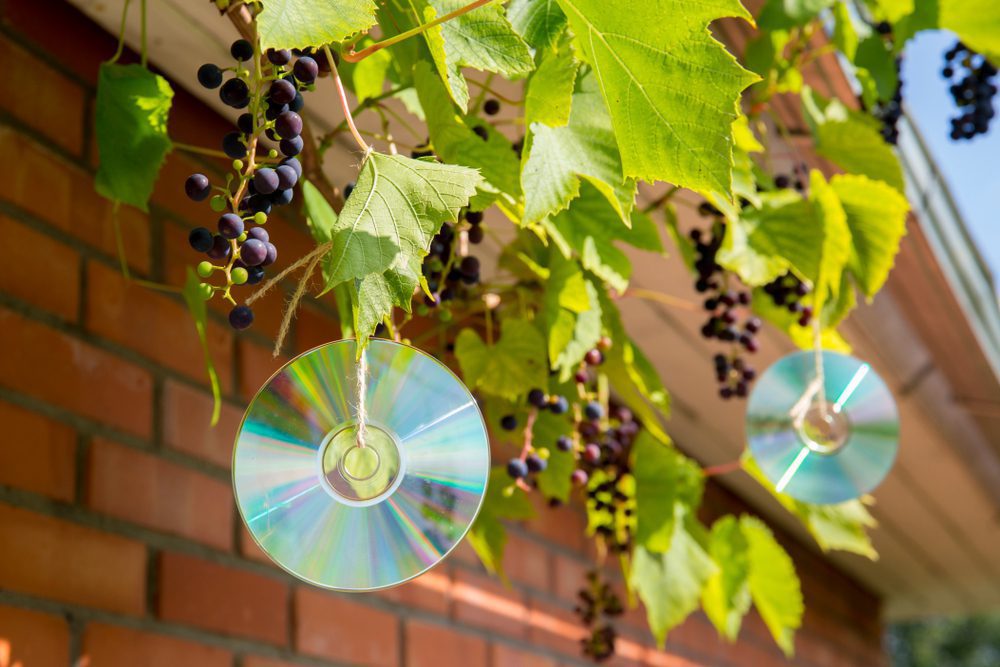
In order to effectively stop red-winged blackbird attacks and protect your property, it’s important to implement physical deterrents. These deterrents create barriers that discourage the birds from invading your space. By employing a combination of scare devices, netting, and visual barriers, you can create an environment that is unappealing to red-winged blackbirds.
Scare devices are an effective physical deterrent that can intimidate red-winged blackbirds and keep them away from your property. These devices mimic natural predators or create loud noises to frighten the birds. Here are some popular scare devices:
- Decoys: Placing decoy predators in your yard, such as owls or hawks, can trick red-winged blackbirds into thinking there is a threat present.
- Reflective objects: Hanging shiny objects, such as aluminum foil strips or CDs, can create a visual deterrent by reflecting light and startling the birds.
- Noise-makers: Using noise-making devices, such as wind chimes or motion-activated alarms, can deter red-winged blackbirds with unexpected sounds.
Netting is another effective physical deterrent that can prevent red-winged blackbirds from reaching your crops, fruit trees, or other valuable plants. By installing netting over your plants, you create a physical barrier that denies the birds access to their desired food source. Ensure the netting is tightly secured and covers the entire area to prevent any gaps or openings that the birds could exploit.
Visual barriers are yet another physical deterrent that can make your property less desirable to red-winged blackbirds. By creating obstacles that obstruct the birds’ line of sight or access to your property, you can discourage their presence. Here are some visual deterrents to consider:
- Hedges or shrubs: Planting dense hedges or shrubs along the perimeter of your property can act as a natural visual barrier, making it difficult for birds to enter.
- Physical fences: Erecting fences or mesh screens can physically prevent red-winged blackbirds from entering your property.
- Visual markings: Applying shiny tape or visual markings on windows, glass doors, or other reflective surfaces can break up reflections that can attract the birds.
By implementing these physical deterrents, you can effectively stop red-winged blackbird attacks and protect your property from their aggressive behavior. Remember to regularly maintain and adjust these deterrents to ensure their continued effectiveness.
Repelling Red-Winged Blackbirds with Sound
When it comes to deterring red-winged blackbird attacks, using sound as a deterrent can be highly effective. These birds are sensitive to certain sounds, which can disrupt their communication and territorial instincts, making your property less appealing to them.
There are various sound-based methods and devices available that can help repel red-winged blackbirds and keep them away. Let’s explore some of the most effective options:
- Sonic Bird Repellers: These devices emit a range of sounds that mimic distress calls or predator noises, creating an environment that is perceived as dangerous by the birds. This can effectively deter them from nesting or roosting on your property.
- Ultrasonic Deterrents: Ultrasonic devices emit high-frequency sound waves that are inaudible to humans but irritating to red-winged blackbirds. These devices can be placed strategically around your property to create a zone that the birds will avoid.
- Noise-Making Devices: Utilizing noise-making devices such as wind chimes, banging pots and pans, or playing recordings of predator calls can also disrupt the birds’ behavior. The unexpected noises will make the area uncomfortable for the red-winged blackbirds, encouraging them to seek quieter locations.
It’s important to note that using sound deterrents alone may not provide a permanent solution, as red-winged blackbirds can become accustomed to repetitive sounds over time. Therefore, it is often recommended to combine sound-based methods with other physical deterrents and bird-friendly landscaping techniques to maximize their effectiveness.
Remember, it’s essential to observe local laws and regulations when implementing sound deterrents to ensure they are used responsibly and do not disrupt other wildlife or impact the environment negatively.
By incorporating sound-based deterrents into your overall bird control strategy, you can create an environment that is less appealing to red-winged blackbirds, ultimately reducing the likelihood of attacks and maintaining peace on your property.
Conclusion
In conclusion, understanding the behavior of red-winged blackbirds is key to effectively preventing their attacks. By implementing a combination of bird-friendly landscaping, physical deterrents, and sound-based repellents, you can create a peaceful environment and eliminate these aggressive birds’ nuisance.
Creating a bird-friendly landscape not only diverts their attention away from your property but also attracts other birds, reducing the chances of red-winged blackbird attacks. Incorporating elements such as bird feeders, water sources, and native plants can significantly discourage their territorial behavior.
Physical deterrents like scare devices, netting, and visual barriers serve as effective tools in deterring red-winged blackbirds. These methods create obstacles and signals that discourage them from invading your space, providing a much-needed relief from their relentless attacks.
Sound-based repellents can be a powerful deterrent as well. Utilizing devices that emit sounds specifically designed to repel red-winged blackbirds can effectively discourage them from approaching your property, maintaining a peaceful and bird-free environment.
FAQ
How To Stop Red-Winged Blackbird Attacks ?
To stop red-winged blackbird attacks, you can try a combination of strategies such as creating a bird-friendly landscape, implementing physical deterrents, and using sound-based repellents. These methods will help discourage red-winged blackbirds from invading your space and reduce their aggression.
Why do red-winged blackbirds become aggressive?
Red-winged blackbirds become aggressive due to their territorial nature. They are known to fiercely defend their nesting sites and food sources, which can lead to attacks on humans or other birds. Understanding their behavior and motivations is crucial in finding effective ways to prevent their aggression.
How can I create a bird-friendly landscape?
Creating a bird-friendly landscape involves providing an appealing environment for other birds, diverting their attention away from your property and reducing the likelihood of red-winged blackbird attacks. This can be achieved by planting native trees and shrubs, offering food and water sources, and providing nesting opportunities.
What are some physical deterrents to stop red-winged blackbird attacks?
Physical deterrents can be effective in discouraging red-winged blackbirds from invading your space. Some methods include using scare devices like owl decoys or reflective tape, installing netting or mesh to protect specific areas, and erecting visual barriers such as fences or hedges to prevent access to your property.
How can sound be used as a deterrent for red-winged blackbirds?
Sound can be a powerful tool to repel red-winged blackbirds. Various sound-based methods and devices are available, such as ultrasonic devices or recordings of predator calls. These emit sounds that are unpleasant to the birds, deterring them from staying in the area and reducing the risk of attacks.
What is the best way to prevent red-winged blackbird attacks?
The most effective way to prevent red-winged blackbird attacks is by combining different strategies. Understanding their behavior, creating a bird-friendly landscape, implementing physical deterrents, and using sound-based repellents in tandem will provide the best chances of success in keeping these aggressive birds at bay.


